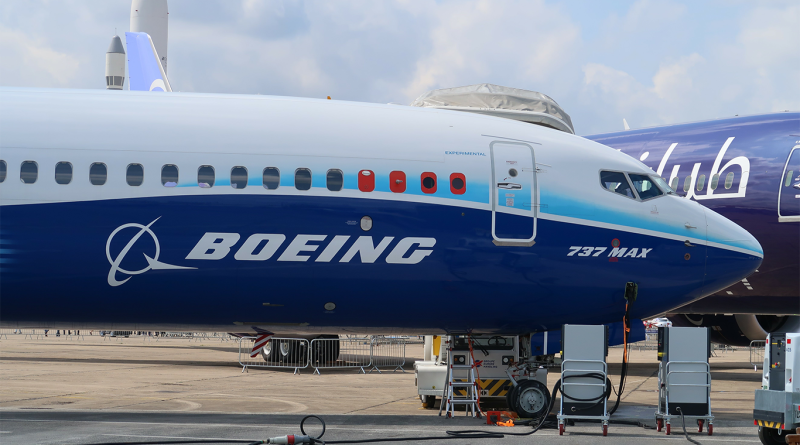Boeing Strike: A Turning Point for Worker Rights
In September 2024, Boeing found itself amid one of the most consequential labor strikes in recent US history. The strike began on September 13, following an overwhelming rejection of Boeing’s initial contract proposals by approximately 33,000 frontline workers represented by the International Association of Machinists (IAM) Districts 751 and W24. Workers highlighted that the company’s offer failed to meet their needs, particularly concerning adequate wage growth and retirement benefits.
The strike represented more than just a stand-off over pay; it underscored broader discontent with Boeing’s shift from defined benefit pension plans to defined contribution systems such as 401(k)s. This change mirrored trends across the private sector, where only about 8% of employees retained access to traditional pension plans, compared to nearly 40% in 1980. The striking workers argued that while these plans have become rare, their exclusion underscored the erosion of guaranteed long-term financial security.
The impact of the strike on Boeing’s operations was profound, halting production lines and delaying deliveries of major aircraft models, including the 737 MAX, 767, and 777. Financial analysts estimated that Boeing incurred up to $100 million in daily losses, exacerbating the economic strain caused by earlier crises, including the 2019 and 2020 grounding of the 737 MAX following two fatal crashes. These production halts had ripple effects throughout Boeing’s extensive supply chain, which supports approximately 1.6 million jobs across the US.
Key details of the approved contract
On November 4, 2024, after nearly two months of negotiations and strikes, Boeing workers ratified a new four-year contract. The agreement marked a significant victory for the union, with a total compounded wage increase of 43.65% over the contract’s duration. The wage structure begins with an immediate 13% increase, followed by 9% annual increases for the next two years, and a 7% boost in the final year. This structure provides both immediate relief and long-term benefits to workers.
The contract also includes a $12,000 ratification bonus, which workers can opt to receive in their paychecks or contribute to their 401(k) plans, enhancing their financial flexibility. Despite this, the deal did not restore the defined benefit pension plans that many employees had hoped for. The company, however, improved its 401(k) offerings, matching up to 100% of the first 8% contributed and adding a 4% automatic company contribution.
This combination of wage increases and enhanced retirement options represents a notable improvement over the earlier proposals rejected by the workers. While Boeing’s refusal to reinstate traditional pensions disappointed some, the enhancements to 401(k) contributions marked a step toward better financial security for its employees.
Union and management reactions
Union leaders, such as Jon Holden, president of IAM District 751, viewed the agreement as a testament to the workers’ determination and solidarity. Holden highlighted that while the deal achieved significant progress, the fight for pensions and enhanced long-term benefits remains ongoing. He expressed confidence that this outcome would serve as a foundation for future labor advocacy, reinforcing the importance of maintaining robust worker protections.
On the management side, CEO Kelly Ortberg’s response focused on unity and the need to rebuild trust. Ortberg, who had assumed his position just weeks before the strike, emphasized that listening and collaboration were vital for Boeing to move forward. The company’s willingness to negotiate improvements and reach an agreement underscored its recognition of the critical role that its workforce plays in maintaining operational excellence.
Broader implications for Boeing and the aerospace industry
The resolution of Boeing’s strike carries significant implications for the company and the aerospace sector. Boeing, as the largest US exporter and a vital part of the national economy, supports a vast network of suppliers and contractors. The strike’s economic ripple effect extended beyond Boeing’s production sites, leading to temporary layoffs and production slowdowns among suppliers spread across all 50 states.
The US Labor Department reported that October saw approximately 44,000 jobs impacted by the strike, including those of workers directly involved and others indirectly affected by the halt in operations. For instance, Spirit AeroSystems, one of Boeing’s largest suppliers, had to furlough 700 workers involved in the 767 and 777 programs for 21 days. The company warned that further layoffs could follow if the strike extended beyond November.
Independent Forge, a family-owned company in California, which reduced its workweek from five to three days to manage costs and avoid deeper staff cuts. President Andrew Flores expressed concern about losing experienced workers, vital for resuming production efficiently post-strike. Another affected supplier, Pathfinder, a Seattle-area supplier focusing on aerospace training, had already laid off a quarter of its workforce and might need to halt further training programs if disruptions continued.
Setting a precedent for future negotiations
The agreement reached will likely influence future labor negotiations in the aerospace industry. The IAM union’s success in securing a substantial wage increase and improved retirement benefits could inspire similar movements at other companies. Labor unions may use Boeing’s deal as leverage to negotiate better terms in their respective industries, emphasizing the precedent this contract sets for fair worker compensation.
This strike and its resolution underscore a broader trend toward re-evaluating worker rights and benefits in an era where labor unions are experiencing a resurgence. The lessons from Boeing’s strike will likely inform not only future contracts within the company but also the strategies of labor organizations nationwide as they push for improved wages and working conditions.
Ultimately, while Boeing and its workforce move forward with this new agreement, the long-term implications on the company’s financial health and its relationship with employees will be watched closely. For suppliers, the halt underscored vulnerabilities within the supply chain, leading to temporary furloughs and potential long-term challenges as production ramps up again.
Restarting operations poses significant difficulties, highlighting the complexity of scaling back up after prolonged disruptions. Boeing’s future success hinges on balancing financial recovery with fostering a collaborative workforce environment that mitigates future labor disputes.
Sources:
